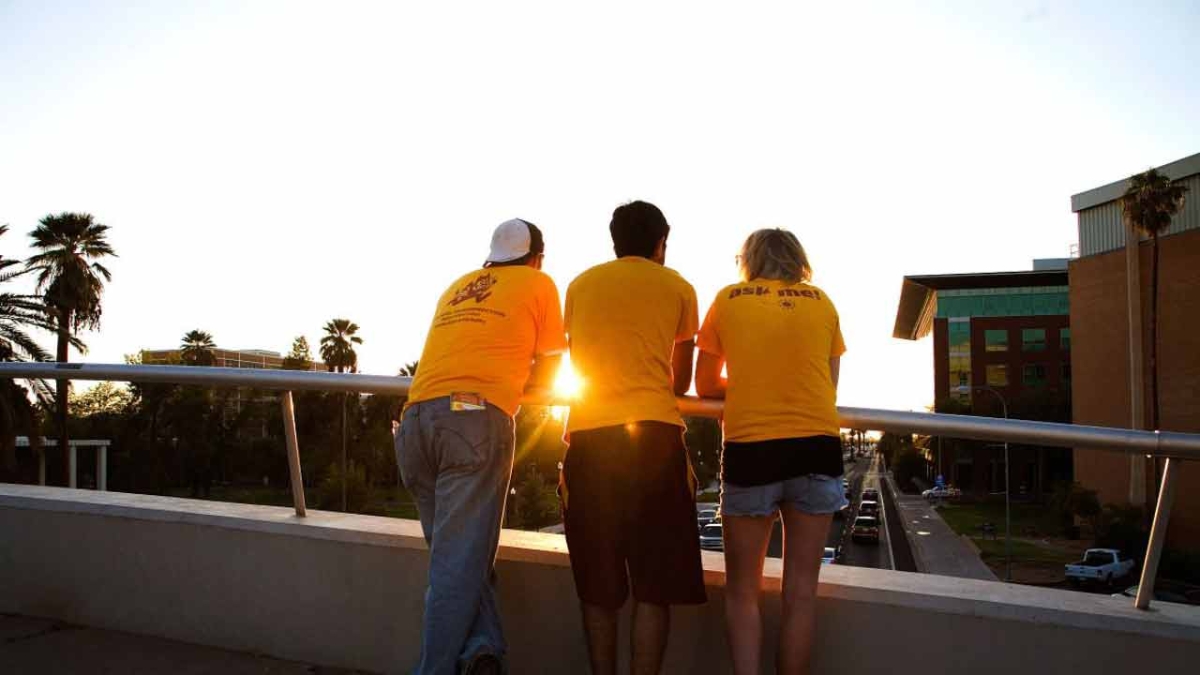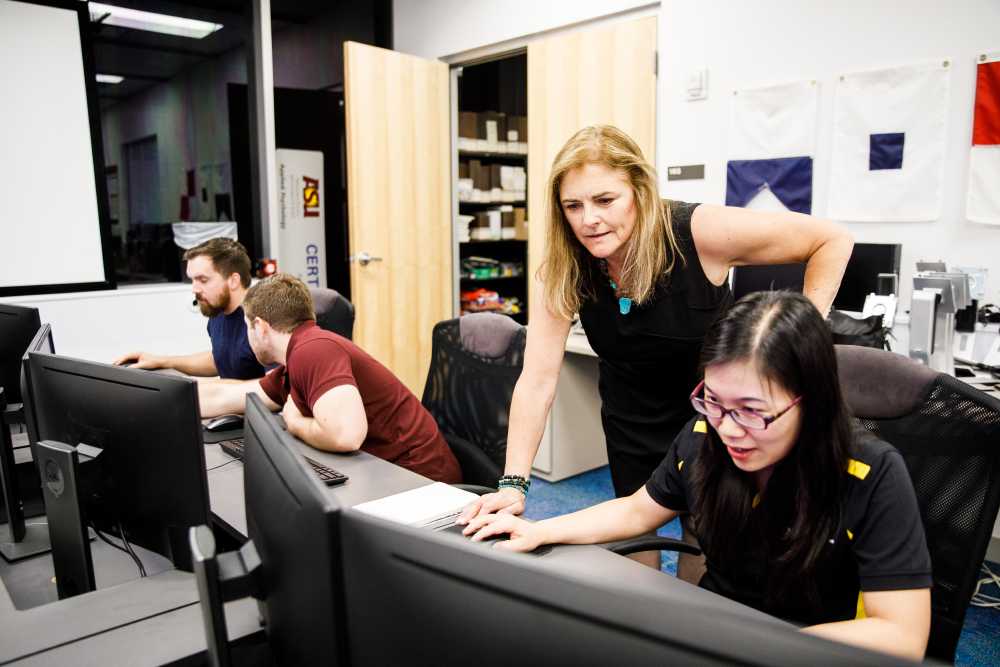A new year is traditionally a time for looking forward, but in the midst of a relentless pandemic, growing climate crisis and rising political divisiveness, it can be exhausting to stay hopeful about the future. When you do find sources of hope, however, life may feel a little less difficult and a little more inspiring.
For a dose of optimism, we asked various researchers at Arizona State University to share what gives them hope from within their fields of work and research.
Inclusion as the bedrock of good science
Ed Garnero plays the guitar in a band, makes his own guitars and also studies plate tectonics as a geology professor in the School of Earth and Space Exploration. You could say that he really likes rock.
“I use the waves from quakes on the Earth and the moon to study their inaccessible deep interiors — much like ultrasound images of an unborn baby,” says Garnero.
His motivation in his research is to understand the massive forces behind many of the things we observe at Earth’s surface — think earthquakes and volcanoes. However, Garnero finds hope in his field not solely from the research itself, but from the increasing diversity in the scientific community more broadly.
“I'm very encouraged to see ramped-up efforts to improve diversity and inclusivity in science. So I'm definitely hopeful for underrepresented individuals getting the same opportunities, jobs, awards and so on,” says Garnero. “I'm also excited to see work more commonly crossing or combining research disciplines. I'm inspired to see researchers value input from a broader spectrum of people, including the public.”
WATCH: How Garnero's work influences his guitar building
Looking beyond Earth
Evgenya Shkolnik is also a professor in the School of Earth and Space Exploration, but her research blasts off Earth and focuses on planets that orbit stars other than our sun, known as exoplanets.
“I research the interactions between exoplanets and their host stars in order to better understand stellar and planetary atmospheres, their magnetic fields and how to detect whether a planet is potentially habitable and even inhabited,” says Shkolnik.
In order to better support her research, she is working with several other ASU professors to develop the Star-Planet Activity Research CubeSat (SPARCS) space telescope. The small telescope — roughly the size of a cereal box — is set to be launched by the end of 2023. It will study the high-energy radiation environments of some of these exoplanets to see how habitable they are.
Teamwork like that is helping to power some exciting developments in space exploration.
“On Dec. 25, a decades-long collaboration between the space agencies of the U.S., Europe and Canada culminated in the successful launch of the James Webb Space Telescope (JWST). During its 10-plus-year mission of unprecedented data collection, the world will learn incredible new things about the cosmos at all astronomical scales, from asteroids to planets to stars to galaxies to the universe itself,” says Shkolnik.
Shkolnik is hopeful about international collaboration between space agencies. That partnership and its resulting launch of JWST will give us significant knowledge of the worlds outside our own.
WATCH: Learn more about SPARCS
'True hope is swift, and flies with swallow’s wings'
Ayanna Thompson is a Regents Professor of English at ASU and the director of the Arizona Center for Medieval and Renaissance Studies. She is also a Shakespeare scholar who specializes in the history and practice of inclusive casting.
“Although most of my career has been spent writing books and articles for other Shakespeare scholars, I have recently turned to working directly in theaters, including the upcoming Broadway production of 'Macbeth,' starring Daniel Craig and Ruth Negga,” says Thompson.
Classical theater companies are starting to include more Black and Latino actors. Thompson’s recent work with theaters is part of this continued effort.
“I am incredibly hopeful about Shakespeare studies because the entire field has become much more expansive and groundbreaking,” says Thompson. “While people think there is nothing left to say about Shakespeare, the early-career scholars in the field are showing us how many new questions are still left to be answered. It’s thrilling!”
WATCH: Learn more about Ayanna Thompson's research
Harnessing the healer within
Though COVID-19 may have taken the spotlight for the last couple of years, cancer remains a formidable threat to human health. More than 1.6 million people are diagnosed with cancer every year. Nearly 600,000 people die from it, making it the second leading cause of death in the U.S. However, at ASU, there are more than 70 scientists researching 25 different types of this disease.
Karen Anderson is one of those scientists. She is a cancer researcher in the Biodesign Virginia G. Piper Center for Personalized Diagnostics and a professor in the School of Life Sciences. She looks at using the immune system to detect cancer and arming it to reduce cancer development. Treatments that boost the immune system to resist a target disease are called immunotherapy.
Advances in immunotherapy offer a source of hope to the millions of people living with cancer and their loved ones.
“I am hopeful that emerging therapeutic cancer vaccines, using newer RNA and nucleic acid synthesis technologies, can be used to activate the immune response against cancer and reduce recurrence rates,” says Anderson.
WATCH: Karen Anderson's ASU KEDtalk on "A 'Living Drug' That Beats Cancer"
Building a dream team
Nancy Cooke directs ASU’s Center for Human, Artificial Intelligence, and Robot Teaming and is also a professor of human systems engineering at the Polytechnic School. Her work lies at the intersection of engineering and psychology.
“I do research on how artificial intelligence can best work with humans within complex sociotechnical systems,” says Cooke.
Cooke’s research focuses on how people, robots and AI can work together in teams to accomplish more than humans or technology alone.
“With the explosion of robots and artificial intelligence in areas of transportation, medicine, space exploration, defense and manufacturing, there is also a growing awareness of the importance of humans in these systems and the need to carefully design technology to work well with people,” says Cooke.
That increased attention to accommodating humans in the equation gives Cooke hope for the future of intelligent technology.
WATCH: Cooke's ASU KEDtalk on "Autonomy Isn’t Autonomous"
Collaboration and innovations to solve the water crisis
Amber Wutich is a President’s Professor of anthropology and director of the Center for Global Health at ASU. Much of her work focuses on how inequitable resource distribution impacts the health and well-being of communities, particularly those experiencing poverty. She currently directs the Global Ethnohydrology Study, a cross-cultural analysis of water knowledge and management.
“My research is about how humans survive in extreme water scarcity. My work examines climate change scenarios, but also water scarcity that results from poverty, inequality and injustice,” says Wutich.
Wutich is hopeful about increasing interdisciplinary approaches to solving critical problems.
“Social scientists like me are working with engineers, geographers and other biophysical scientists to respond to climate change in ways that will build a more resilient and equitable world. For example, nanotechnology-enabled water treatment can help us build new mobile, adaptive and decentralized water systems that get clean water to more people than ever before,” says Wutich. “These new technologies can improve our lives if we are smart about growing healthy societies around them — and I am hopeful because our teams of scientists are finding ways to do that.”
WATCH: Wutich's KEDtalk on “Building a True Sharing Economy”
Hope through the study of hope
Crystal Bryce is an assistant clinical professor in the T. Denny Sanford School of Social and Family Dynamics and associate director of research in the Center for the Advanced Study and Practice of Hope. Bryce studies how hope is related to educational, psychological and social well-being.
“Scientifically, hope isn't the squishy feeling we often think about when we hear the word; rather it is a cognitive motivational skill set that encompasses goal setting and figuring out routes to reach those goals and feelings,” says Bryce.
The idea that hope be defined and, more importantly, developed in anyone gives Bryce hope.
“Given all that we've been going through as a society, I think that the push to foster hope as a skill that is about goal setting and attainment is something that can help everyone be successful,” says Bryce. “I'm optimistic that this emphasis will continue and grow, not only advancing the science of hope, but also helping people learn how to be hopeful themselves.”
WATCH: Learn about the World Conference on Hope and Youth
Written by Elise Lange
More Science and technology

Teaching construction realities with virtual environments
Visiting a construction site is a valuable learning opportunity for students who want to one day work in the industry. Experiencing the sights, sounds and other sensory elements of an active…
ASU, Mexico partner to build next generation of chipmakers, drive semiconductor innovation
Thousands of college students in Mexico will soon have the opportunity to enroll in Arizona State University’s new, free online course to learn the fundamentals of microelectronics and…

ASU, St. Mary’s Food Bank partner to tackle food insecurity in Arizona
Arizona State University and St. Mary’s Food Bank (SMFB) have joined forces to create an interactive data dashboard that tracks and maps food insecurity rates across Arizona. This innovative tool…







